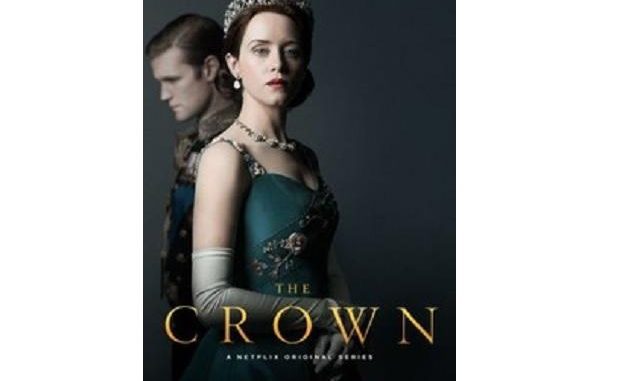
Created and written by Peter Morgan, the series has spent two acclaimed seasons exploring the nation’s politics and social mores through the prism of Queen Elizabeth II’s reign
NYT Last Updated at November 16, 2019 01:17 IST
The corgis just wouldn’t behave. Mid-take, they ran off, causing general hilarity. “Sit, sit!” Olivia Colman called out. “Strong voice!” prompted the dog handler, standing nearby.
“Yes, thenk you,” said Colman demurely, in her best Queen Elizabeth accent. She frowned imperiously at the frolicking dogs. “SIT!” They sat.
It was a chilly November day last year, and the new cast of the Netflix series The Crown were arrayed across the gilded couches and crimson velvet chairs of a sumptuous state room at Wilton House, a 16th-century stately home standing in for Buckingham Palace. A precisely composed group — the Queen (Colman), Prince Philip (Tobias Menzies), Lord Mountbatten (Charles Dance) seated; Princess Anne (Erin Doherty) and the Queen’s aide Michael Adeane (David Rintoul) standing behind them — faced Prince Charles (Josh O’Connor).
With its artful interweaving of British history and domestic angst, the scene was vintage Crown. Created and written by Peter Morgan, the series has spent two acclaimed seasons exploring the nation’s politics and social mores through the prism of Queen Elizabeth II’s reign, while offering a voyeuristic glimpse of the lives behind the royal family’s impassive facade.
The eagerly awaited third instalment debuts Sunday on Netflix, and much will be familiar: the exacting historical detail, the sumptuous interiors of palaces and manor houses. But one major aspect will not. The actors who play the principal characters have all been replaced for Seasons 3 and 4.
“I think that the longest you can believe an actor in an ageing part is about 20 years,” Morgan said in a telephone interview. “Right from the start, we decided that if it all worked and kept going, we would recast every two seasons.”
The swap is also something of a gamble for a series that achieved rapturous acclaim for its principal actors, notably Foy, who won a Screen Actor’s Guild award and was nominated for an Emmy. But Morgan and his producers found a pretty sure casting bet in Colman, who is adored by the British public, and last year found broader fame when she won an Oscar for her portrayal of another English queen (Anne) in The Favourite.
“Olivia has a similar, uncannily intuitive understanding of the role, and a stillness that Claire has,” Suzanne Mackie, an executive producer on the series, said in a telephone interview. “They feel like everyday women, that we should somehow know them, yet as they become the sovereign, they become unknowable and aloof.”
Ben Caron, a director and executive producer on the show, said in a telephone interview that it had been “pretty terrifying” for the new cast. “Not only do you have the real-life ghost of the character, you have the ghost of the previous actor,” he said.
Helena Bonham Carter, who took over the role of Princess Margaret from Vanessa Kirby, echoed that sentiment. “My first thought was that I don’t look much like Margaret and definitely nothing like Vanessa,” she said in a telephone interview. “I am about five feet shorter and two feet wider. But they didn’t seem perturbed.”
The Crown is both essentially historically accurate and also clearly fiction. “It’s not a documentary,” Morgan said. “But I try to make everything as truthful as possible even if I can’t know it’s entirely accurate.”
“The Crown was conceived from the start to span six seasons, each covering roughly a decade of Elizabeth’s life as a monarch, and it is Morgan’s particular take on each season’s epoch that has given the series its distinctive mix of the personal and the political.
Season 3 begins with the election of Harold Wilson and a Labor government in 1964 and ends with the Queen’s silver jubilee celebrations of 1977. Along the way, it layers globally monumental moments, like the 1969 moon landing, with lesser-known national events (the horrific avalanche of coal waste in Aberfan in Wales, which killed 116 children and 28 adults); political intrigue (the miners’ strike of 1973-74); and family drama, including the breakup of Princess Margaret’s marriage to Lord Snowdon and the thwarted romance of Prince Charles and Camilla Shand.
The moon-landing episode focuses strongly on Prince Philip, with a tour-de-force performance from Menzies as a man suffering from a crisis of identity, for whom the astronauts’ achievements come to represent his own missed chances. Other episodes focus on Princess Margaret, and the later part of the series gives considerable weight to the young Prince Charles, sympathetically portrayed by O’Connor as a sensitive and insecure young man at odds with the implacable imperatives of royal behaviour.
“There is a difficult moral question at the heart of his life,” O’Connor said in a telephone interview. “Being a king in waiting means waiting for his mother to die.”
But the Queen is always the centre of gravity, Morgan said. “Every time I try to write an episode that doesn’t involve her, it runs aground.” But as Morgan wrote in his 2013 play The Audience, which inspired the series, the reigning monarch represents “an unbroken line, the constant presence” that represents that settled past and serene future. That’s the power of the crown — and The Crown.
© 2019 The New York Times
First Published: Sat, November 16 2019. 01:11 IST
read the full story about ‘The Crown’ executes a peaceful palace coup
#theheadlines #breakingnews #headlinenews #newstoday #latestnews #aajtak #ndtv #timesofindia #indiannews
